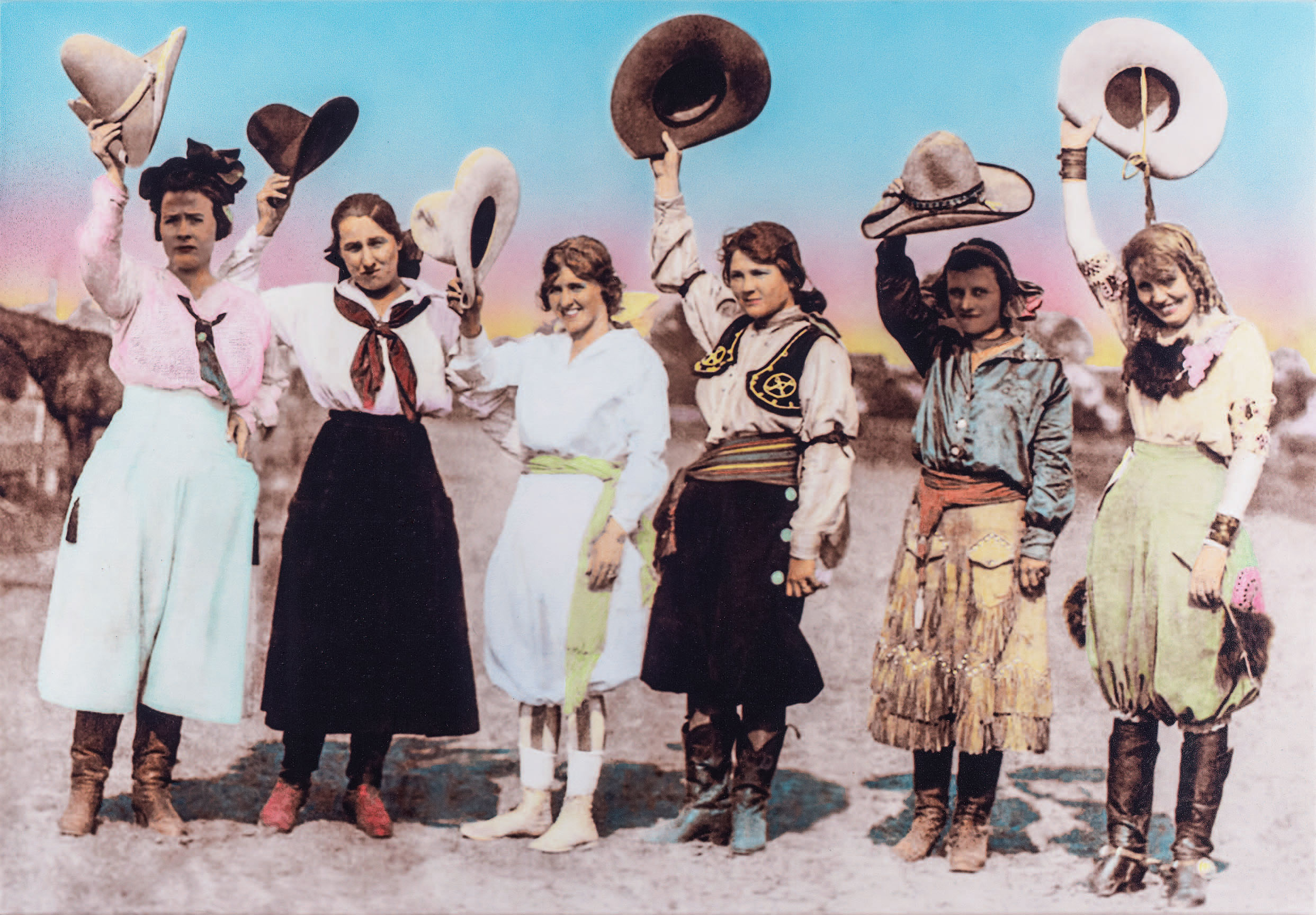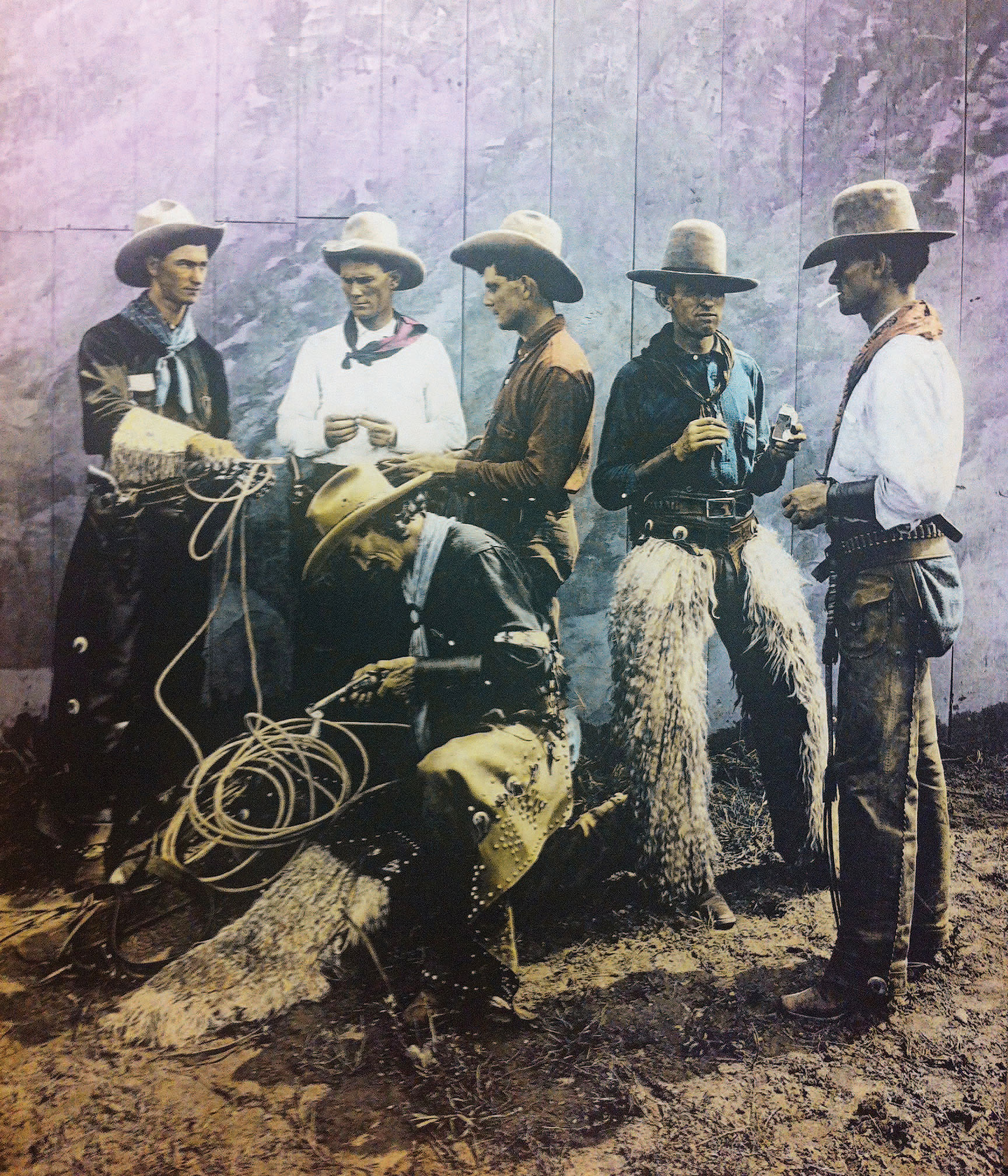
The artist combines painting with old black-and-white photos for a career that has lasted more than 40 years.
Thirteen cowgirls. One charity auction in Dallas. Fourteen grand.
The year was 1979 — that’s when everything blew up for Texas artist Bob “Daddy-O” Wade. “Thirteen Cowgirls ultimately became my most famous painting and toured all over the United States,” Wade says from his home studio in Austin, Texas. Now 73, he’s still colorizing cowgirls and has painted dozens, maybe a hundred or more, since — but now he’s collected by and exhibited in some of the finest museums and art collections in the world.
The idea to hand-tint old black-and-white photographs dawned on Wade when he was teaching art outside of Dallas and happened to pop in to a little neighborhood store where under the glass of the cashier’s counter were images of a fish someone had caught. A lifelong Texan — born in Austin and raised all over the state — Wade found himself drawn to that kind of vernacular iconography. “You know these things are pretty damn quirky and so Texas and so un-New York, so I started blowing up these black-and-whites on canvas.”
He’d been collecting old postcards from the 1920s that he’d picked up at flea markets. Among them were rodeo photos shot by amateurs with Kodak cameras loaded with film that generated 4-by-6-inch negatives that could be developed and printed overnight as souvenir postcards to sell to rodeo-goers the next day. The resolution of the postcards was magnificent, and the images projected easily to large-scale photo emulsion canvases. Wade airbrushed the photographs, transforming them into paintings. Experimenting with his own vernacular, he drew on what he’d learned in the mid-1960s while getting his BFA at the University of Texas at Austin and his master’s in painting at the University of California, Berkeley. “I was well-prepared with all of that academic training when I started to airbrush,” Wade says. “In my pieces, it had a soft, beautiful result.”

The cowgirls gave way to cowboy bands, Navajo Indians, bathing beauties, hula girls, and pretty señoritas, but no matter what the subject, Wade’s serious painterly approach remained. “Ultimately it has to be a good painting in terms of balance, design, and rendering,” he says.
Even bigger than his canvases (some of them 20 feet long) are his giant sculptures. Wade’s elevated sense of kitsch as culture has taken the shape of the world’s tallest cowboy boots, outside of North Star Mall in San Antonio; a 40-foot green iguana at the Fort Worth Zoo; and huge dancing frogs, originally made for one of Shannon Wynne’s bars, now on top of a Taco Cabana in Dallas.
“When you have stuff in the public realm, it’s pretty darn thrilling,” Wade says. “You drive down Fort Worth’s University Boulevard and you see the iguana and they’ll put a Santa Claus hat on it for Christmas and an Uncle Sam hat for the Fourth of July. There’s room for everybody. I just happen to have found my niche.”
Bob “Daddy-O” Wade, Photoworks, 1971 – 2015, a retrospective of his 40-plus-year career, was featured as a special exhibit at 78704 Gallery in Austin, Texas.
From the February/March 2016 issue.














